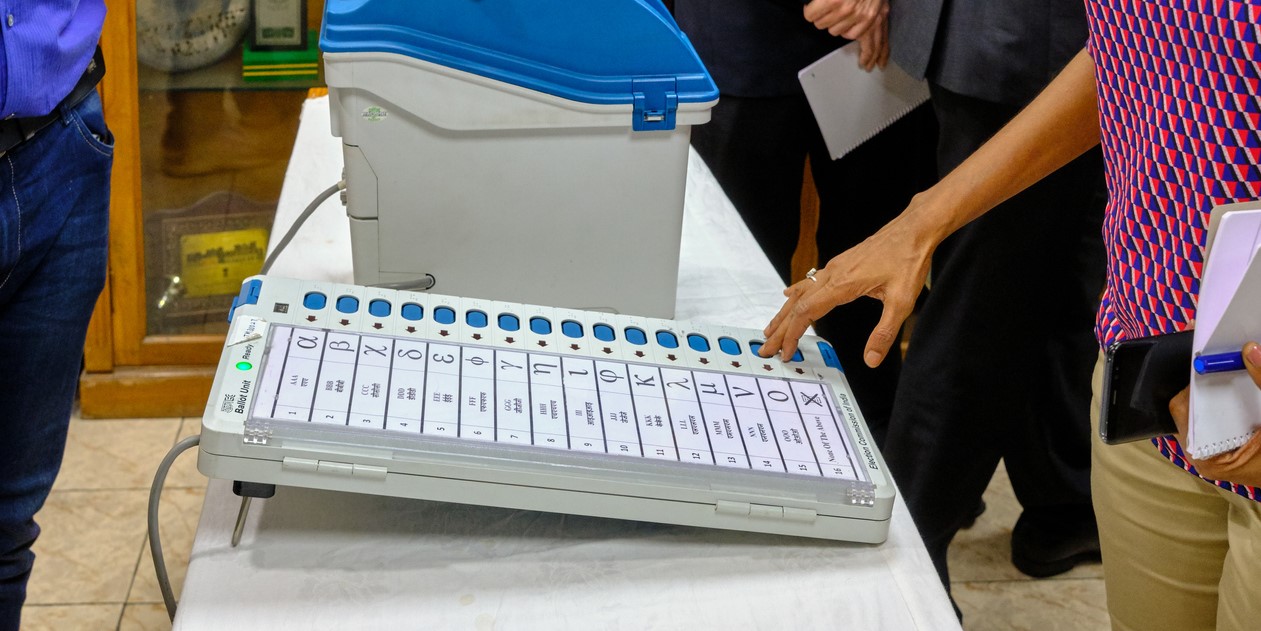The bench had said it needs clarification on certain aspects as there was some confusion over the answers given by the EC.

A sample EVM. (iStock)
The Supreme Court on Wednesday, 24 April, reserved its verdict on a batch of pleas seeking complete cross-verification of votes cast using EVMs with Voter Verifiable Paper Audit Trail (VVPAT) after taking note of answers to queries it had raised before the Election Commission.
A bench of Justices Sanjiv Khanna and Dipankar Datta sought answers from an official of the poll panel to five questions related to the functioning of the Electronic Voting Machines (EVMs), including whether the microcontrollers fitted in them are reprogrammable.
Senior Deputy Election Commissioner Nitesh Kumar Vyas, who had earlier made a presentation to the court on the functioning of EVMs, was summoned by the bench at 2 pm to answer the queries.
The bench had said it needs clarification on certain aspects as there was some confusion over the answers given by the EC to ‘frequently asked questions’ (FAQs) about EVMs.
“We have some doubts and need clarification and that’s why we have listed the matter for directions,” the bench said, adding “We don’t want to be factually wrong but doubly sure in our findings”.
During the hearing, Justice Datta pointed out to advocate Prashant Bhushan that no incidence of malicious program loading with the symbol had been reported.
“Out of the 5 percent VVPATs counted, any candidate can show if there is any mismatch,” Justice Datta said.
“Till date there is no report of any such incident (malicious program being loaded along with the symbol). We cannot control the election, Mr Bhushan, we cannot control another constitutional authority,” Justice Datta remarked.
Justice Khanna reassured, “If there is room for improvement, we can certainly enhance it. The courts intervened twice: first, when we mandated the use of VVPAT, and second, when we increased the verification from one to five percent.”
The Supreme Court noted that whenever suggestions were sought to make the voting process better, the submissions consistently advocated for a return to ballot papers.
The Election Commission official told the apex court, “Each of the three units, CU, BU, and VVPAT, contains its own microcontrollers, securely housed within. These microcontrollers cannot be physically accessed.”
(With PTI inputs)

May 06, 2024

May 06, 2024

May 05, 2024

May 05, 2024

May 05, 2024

May 05, 2024